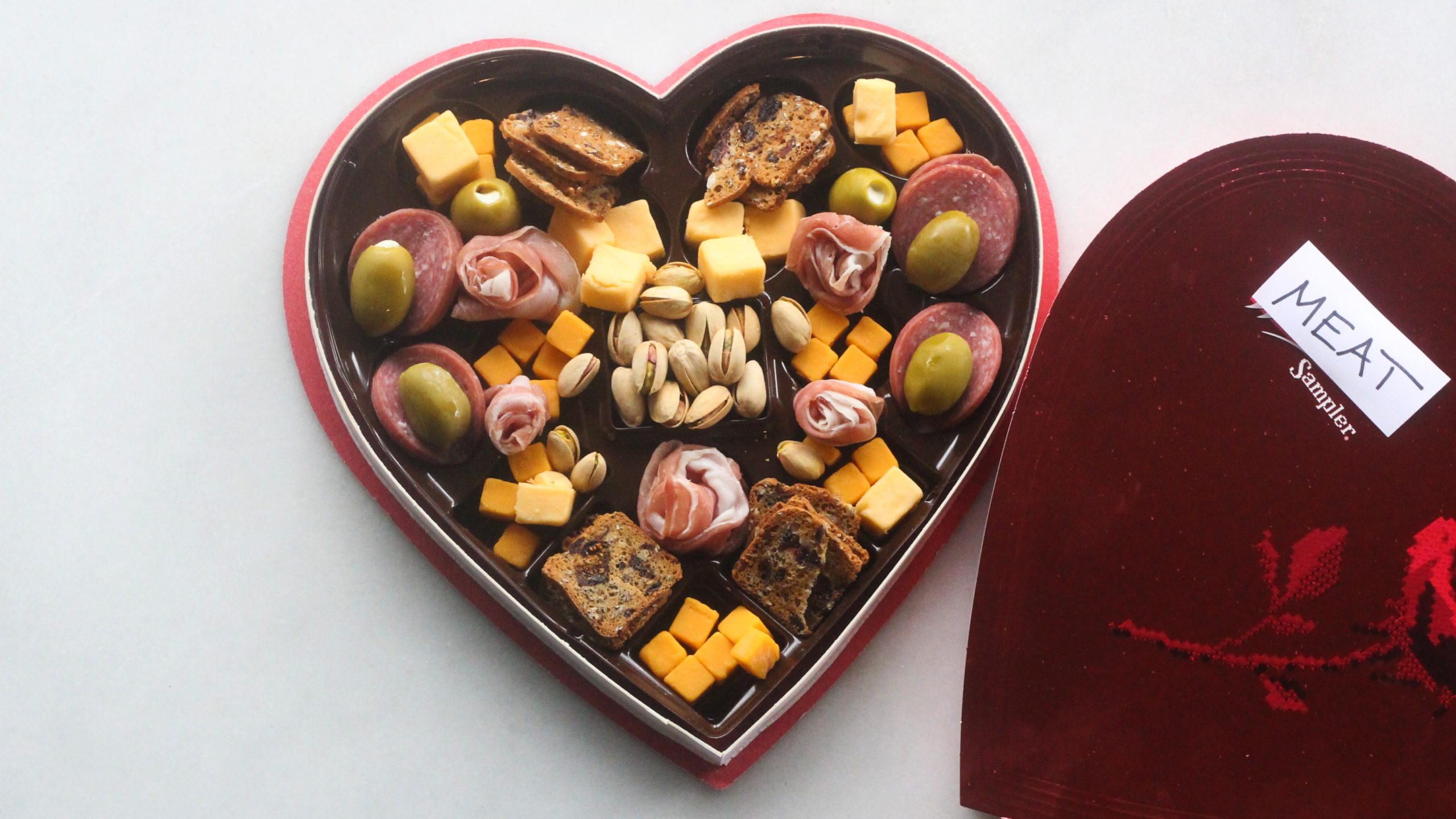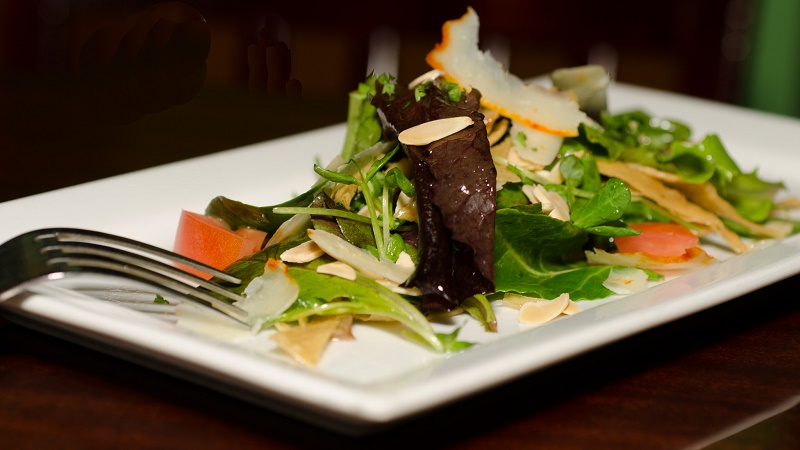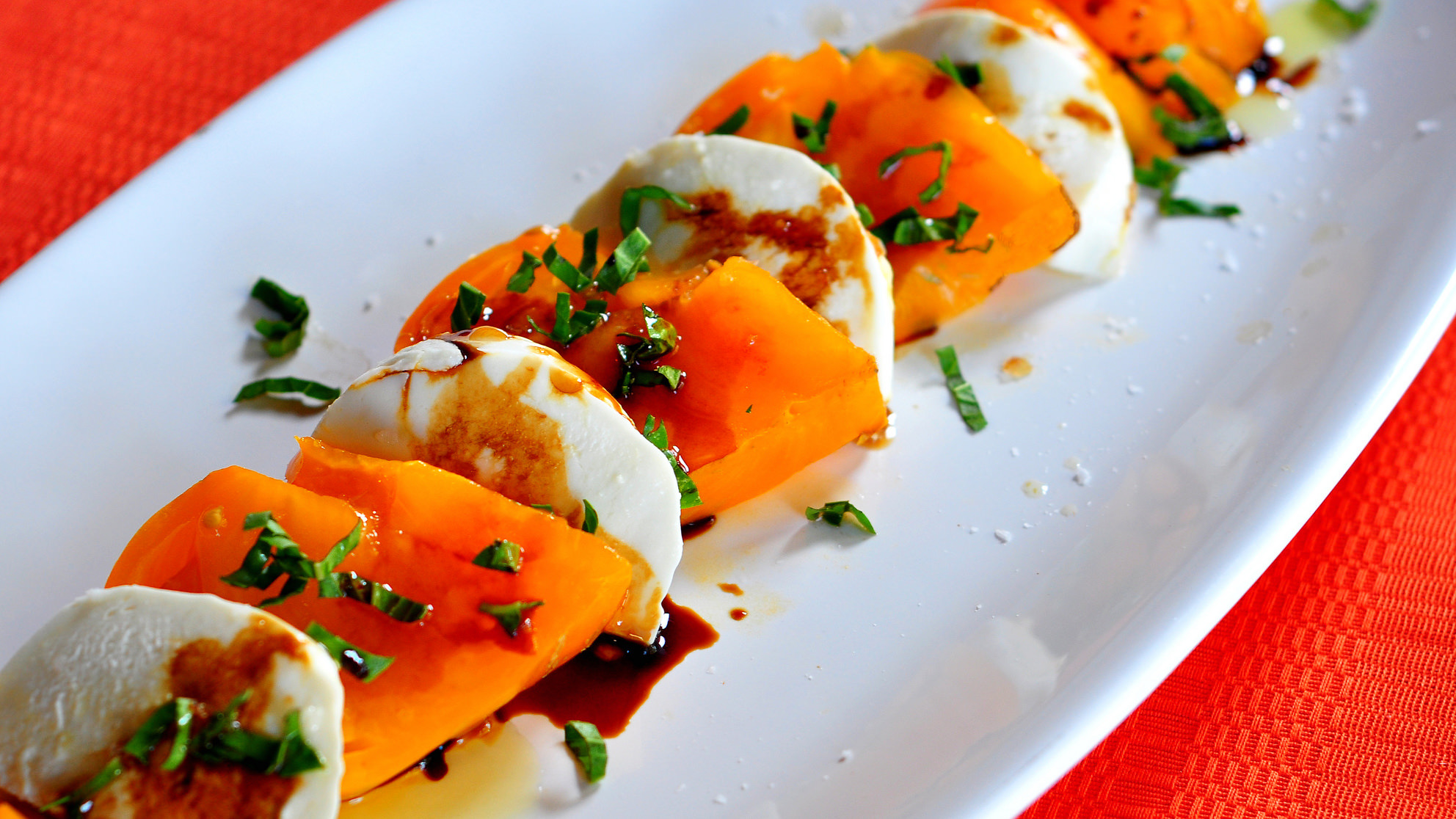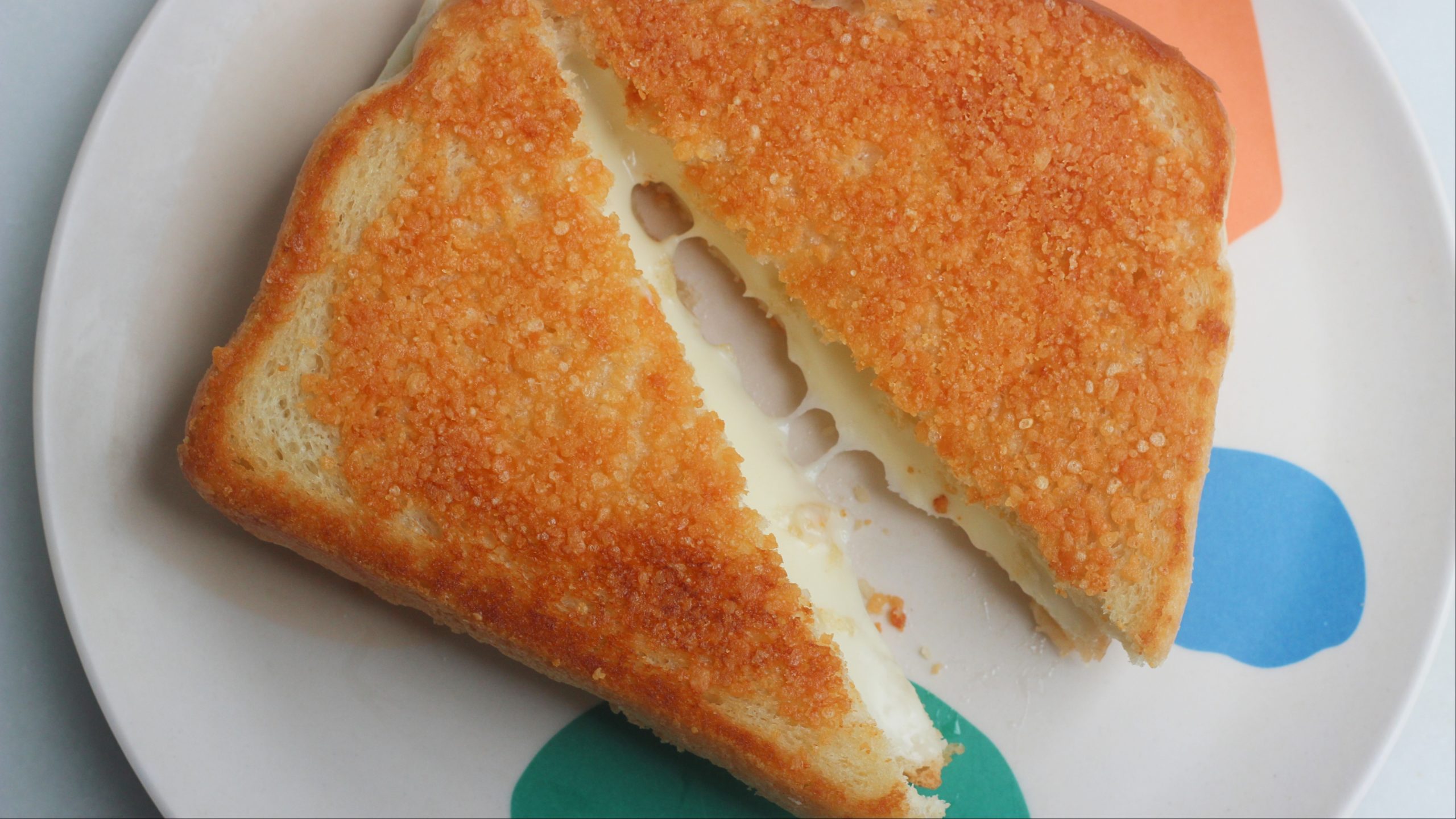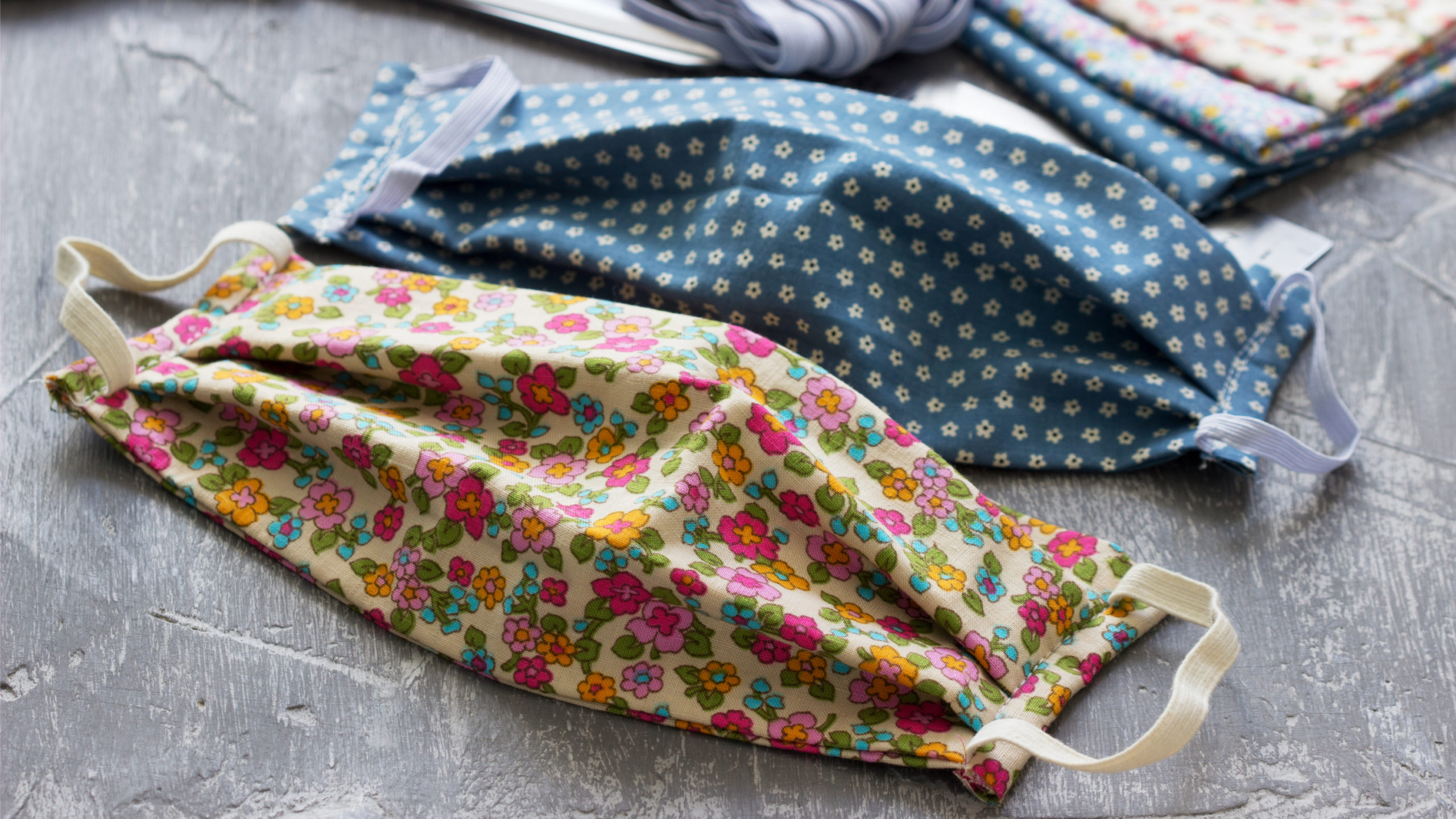Whether you’re cooking a meal or phoning it in this Valentine’s Day, treating the evening like a dinner party for two will ensure you strike a special, thoughtful tone.
Basically, if it’s a move you’d bust out for a dinner party, you should bust it out for the dinner you serve on February 14th. Dinner parties are all about impressing people with how mature and considerate you are, which is a vibe that should be extended to your valentine, who is — more than likely — the person you have been around almost constantly for a full year. Attention to detail can be a love language, and can make an at-home meal feel
different
, even if you haven’t left that home in over 11 months.
Set the table
If you have “nice” dishes, use them. If you have children, banish them for the evening so you don’t have to worry about them breaking the nice plates (have them watch a movie or put them to bed early). Don’t, however, use plates that are so nice you can’t put them in the dishwasher, or plates that are so nice you feel anxious eating off of them. This is supposed to be fun, after all.
Once you’ve picked the plates, you can focus on the rest of the table. Place mats, cloth napkins, and — yes — candles are all things that make the meal feel more intentional and thoughtful. I also recommend place cards, even if there are only two places at the table. Write your Valentine’s name on a cute little card or — better yet — a clementine (get the kind with leaves still attached if you can), set it in front of their chair, and watch their face light up at the adorable, edible detail.
Warm your plates and chill your glasses
If you are going to go through the trouble to cook a beautiful medium-rare steak, or mix a perfectly chilled and diluted martini, you might as well take the extra step of serving them in or on a vessel that won’t negatively affect their temperature one way or other. For plates that will be graced with hot food, just
set them in a low-temperature oven
(the lowest it will go) on a baking sheet for a couple of minutes right before serving time. (This is also a good brunch move — few things ruin a hot egg like a cold plate.)
Nobody likes a warm, wilted salad. If you want your homemade salads to be as crisp and refreshing as the ones you get at a restaurant, try this trick.
Read more
If you’ll be serving a salad,
pop the salad plates in the fridge
(for 20 minutes) of freezer (if you’re in a hurry) to help keep your greens cold and crisp. This may not be necessary, depending on how warm you keep your house, but it’s useful if your plates are fresh and warm from the dishwasher.
If you’ll be serving cocktails, white wine, or even Diet Coke, pop a few fancy glasses in the freezer while you prepare the meal. This is a particularly nice — some might say “crucial” — move if you’ll be sipping martinis, which are at their best when they are icy.
Learn a few fancy plating tricks
I did not expect artful plating to be one of the things I missed during this pandemic, but it is — I miss the stark white plates with their negative space and carefully placed garnishes. People truly do
eat with their eyes first
, and while sculpting mashed potatoes may feel silly in the moment, it feels thoughtful on the plate. If you’re uncomfortable with that amount of bourgeois decadence, at least
finish your dish
with a squeeze of lemon, a drizzle of good olive oil, or sprinkle on some fresh herbs and
crunchy stuff
,.
If you’ve watched any appreciable number of cooking shows, you’ve most likely been instructed by some famous chef to “finish” your dish with a drizzle of oil, a sprinkling of salt, or some freshly chopped herbs. “Finishing” a dish, which is quite different than polishing one off, simply means adding...
Read more
Don’t forget the butter (and nice salt)
An ample supply of room-temperature butter is what separates my favourite bread-serving restaurants from the rest. If a waiter brings me butter that’s topped with some sort of flake salt, I’m theirs for the night, and will follow them into hell, or at least the more expensive pages of the wine menu. It’s a powerful move, is what I’m saying, and you can harness its power by setting out good butter (which is
different from your everyday butter
), nice salt (Maldon or something similar), and a pepper mill full of whole peppercorns.
If your meal or your valentine requires any condiments, pickle, or sauce, make sure to set all that out before dinner is served so no one has to leave the table, and
clean the bottles and lids
of those condiments before setting them out. You can also transfer them to cute little bowls with cute little serving spoons, but cleaning the hot sauce bottle should suffice.
Discuss the division of labour beforehand
If you are presenting the meal as a “gift,” then cleaning up the mess you make in the kitchen should be part of it. One of the best things about going out for Valentine’s Day is not having to clean anything, so don’t foist an unexpected chore on your partner or spouse.
If the meal is a combined effort, divvy up the labour before February 14.
Decide who is making the main, who is making dessert, and who’s in charge of the drink program, mood music, and cleaning up
ahead of time
so you don’t end up bickering on an evening that is supposed to be romantic. Do this even if you’re getting takeout. Tossing the plastic takeout container in the dishwasher after dinner isn’t as big of an ask as cleaning grease out of a cast iron pan, but it is still an ask, and you might want to ask for other after-dinner activities instead.
The post
Treat Valentine’s Day Like a Dinner Party for Two
appeared first on
Lifehacker Australia
.

chevron_right



